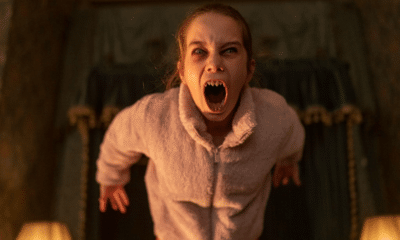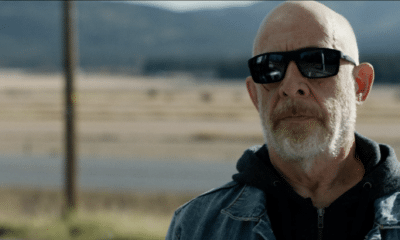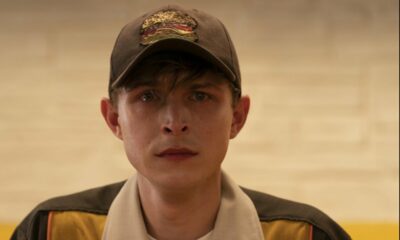Many directors shred close to the bone when taking on their first feature. Ben Affleck, Marjane Satrapi, and Giuseppe Tornatore have all taken the introspective route. But Emmy award winning documentary maker Steven Silver is no novice behind the lens. He has directed for PBS, the Discovery channel and History channel documenting some of the most intense political conflicts around the world. THE LAST JUST MAN created a harrowing account of the the events that lead to the slaughter of 80,000 in 100 days, and THE DIAMETER OF THE BOMB followed a group of Israelis all interconnected by the single attack of a Palestinian suicide bomber.
But THE BANG BANG CLUB brings this South African-born director closer to home, taking on the complex period of convulsive bloodshed that preceded the end of apartheid. No stranger to the dangers of war-reporting, Silver was compelled by the story of four brassy photographers who risked their lives to capture the 1990-1994 violence before Mandela’s election. These South African photojournalists Kevin Carter (played by Taylor Kitsch), Greg Marinovich (Ryan Phillipe), Ken Oosterbroek (Frank Rautenbach), and João Silva (Neels Van Jaarsveld) were coined The Bang Bang Club by Living magazine, and together produced some of the most iconic images in history.
The Bang Bang club were infamous for their intrepid behaviour, and Silver has chosen to centre his story on their experience of the 1990s violence, as opposed to the violence itself. His version of THE BANG BANG club narrative was adapted from the autobiographical novel of Greg Marinovich and João Silva, who were also involved in the making of the film.
While the end of apartheid was drenched in celebration, many chose to veil over the thousands of deaths that were heralded by the conflict it caused. Director Steven Silver spoke to THN about the importance of retelling the story, the bravery of The Bang Bang members and his favourite ‘iconic’ image.
THN: You left South Africa just at the point where democracy was born in the country, what was it like to return there to shoot The Bang Bang club?
Silver: I left in 1995, so for me returning was a very personal experience because in the early 90s I was president of a student movement in South Africa. I lived through the period which the film described which was really the period between Nelson Mandela’s release in 1990, and the elections in 1994. I was at a number of the events that were described not only in the film but in the book on which the film is based. For me, it was a chance to revisit my own coming of age during that time in South Africa without doing something so obviously autobiographical. My own experience of documenting conflict on film made it personal in a different way. It was a chance for me to explore what drives people to do that kind of work, what goes into bringing those photographs on the front page of a newspaper and around the world.
THN: How involved was Greg Marinovich in the making of the film?
Silver: Well Greg and João Silva were extensively involved, they read drafts of scripts and were on set most days of shooting and saw rough drafts to give comment on it.
THN: How did they react during shooting to having this very traumatic and eventful period in their lives depicted on screen?
Silver: I think it was extraordinarily difficult for both of them. For one, it brought back a period in their lives which was very, very difficult. You know we were treading carefully as we were interpreting their colleagues and friends, and their own lives. The final product produces a version of themselves which they may recognise only in part, and it could have been very alien to them. I mean João liked the film. I don’t know if you know but, in December of last year, João stepped on a landmine just outside Kabul, and had both of his legs amputated. He watched the film from his hospital bed. I can’t imagine ever making a film that could ever be as visceral as the actual experiences of The Bang Bang Club.
THN: How did you manage to translate these well known images on to the screen?
Silver: I was just very conscious of getting it right. The idea is for the audience to see and feel the moments that lead to those photographs. I wanted to discover the journey to that moment, frozen in time, and discover what happened afterwards. I went to great lengths in recreating those moments and ensure that they matched the actual photograph. It was extrordinarily intense.
One of the first decisions I made when shooting the film was to shoot in the exact locations where these events took place. One of the by products of this design was that the people you see in these shots were the actual people who were part and present at these events. We were filming on their streets. As a result, they are not acting, they are remembering, which brought an extraordinary quality to the film.
THN: How was that shift for you as a documentary filmmaker, to turn your hand to this style of feature film?
Silver: My experience as a documentary filmmaker before this was surprisingly unusual. It’s a very different process, so I had a very steep learning curve, but I was surrounded by great people, my DOP, producer and editor, all managed to camouflage my many, many shortcomings.
THN: The focus of your story is quite prevalent, it’s not long ago we lost Tim Hetherington in Libya, how did you research the true experiences these conflict-photographers?
Silver: I interviewed so many photo journalists in preparing for the film. The work I completed as a documentary maker was not as dangerous, but I have spent time in areas of conflict. One of the documentaries I made before this told the story of a journalist in a war zone. It was an area that I’ve always had interest in, long before we started filming.
THN: How politically orientated is the film?
Silver: I mean, it’s not much at all. One of the choices that I made, for better or for worse, was to focus very much on their story. I wanted to really depict what these people went through, and I didn’t want it to be overshadowed by what is indeed a very compelling political context. So one of the core criticisms of the film has been that it is not political enough.
What is particular about this film is that it tells that exact period of Mandela’s release and subsequent election between 1990 and 1994. And, more people died in that four year peiod than died in the 85 odd years of apartheid. There was about 14,000-20,000 deaths in those four years. But one of the reasons that it isn’t really spoken about is that people want to focus on the birth of a new South Africa. That is all anybody wanted to talk about in 1994, was the celebration. Nobody wants to talk about the deaths and the last battle for apartheid. People want to celebrate not to mourn. And so, what’s important about the film is that it tells the story of that period. It is not a definitive film on that period by any stretch, but it certainly opens the window.
THN: How has the film been received so far?
Silver: The response has been overwhelming in different countries, in the US, it got more wideluy reviewed than I ever anticipated. Partly because it’s been around a long time, partly because it is a story about journalists and the death of Tim Hetherington and the hundreds of deaths which occured within two days of it premièring at Tribeca. The individual responses have been really quite polarised. Either people love the film or just really don’t like it. I didn’t expect that much of a polarised response.
THN: And finally, what is your chosen ‘iconic’ image?
Silver: One of my favourite historical images is the photograph by Alfred Eisenstaedt of the couple kissing just after the war ended. That’s one of my favourite photographs.
THE BANG BANG CLUB will be released on Blu Ray and DVD on October 3rd.

Latest Posts
-


Film News
/ 12 hours agoFirst ‘Transformers One’ teaser trailer debuts IN SPACE!
The animated feature film is heading to cinemas this September.
By Paul Heath -


Film Reviews
/ 12 hours ago‘Abigail’ review: Dirs. Matt Bettinelli-Olpin & Tyler Gillett (2024)
Matt Bettinelli-Olpin and Tyler Gillett direct this new horror/ heist hybrid.
By Awais Irfan -


Film Trailers
/ 13 hours agoNew trailer for J.K. Simmons-led ‘You Can’t Run Forever’
A trailer has dropped for You Can’t Run Forever, a new thriller led by...
By Paul Heath -


Film Trailers
/ 19 hours agoNew trailer for Shudder’s ‘Nightwatch: Demons Are Forever’
Coming to Shudder this May.
By Paul Heath

















